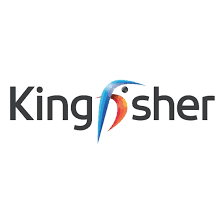Some Recent Discussion Highlights

Private Member Discussion
Talent and skills development in procurement & supply chain
Talent and skills development in procurement & supply chain

Private Member Discussion
How digitalisation & connectivity multiple supply chain cyber risks
How digitalisation & connectivity multiple supply chain cyber risks

Private Member Discussion
Engaging suppliers in sustainability efforts
Engaging suppliers in sustainability efforts

Private Member Discussion
How to quantify the benefits of long-term forecast improvements?
How to quantify the benefits of long-term forecast improvements?

Private Member Discussion
Control towers: who, what, why and how?
Control towers: who, what, why and how?

Private Member Discussion
Scope 3 net zero for supply chain - start now!
Scope 3 net zero for supply chain - start now!

Private Member Discussion
Taking control of your data for supply chain visibility
Taking control of your data for supply chain visibility

Private Member Discussion
What should a supply chain data transformation roadmap look like?
What should a supply chain data transformation roadmap look like?

Private Member Discussion
Integrating demand sensing into tactical planning to eliminate the bullwhip effect
Integrating demand sensing into tactical planning to eliminate the bullwhip effect

Private Member Discussion
Adapting to ongoing supply chain volatility
Adapting to ongoing supply chain volatility

Private Member Discussion
Data, data everywhere...small steps to harnessing supply chain data to enable performance improvements
Data, data everywhere...small steps to harnessing supply chain data to enable performance improvements

Best Practice Case Study
How BIOTRONIK built a business case for AI-driven improvements in forecast accuracy, reduced workload and inventory savings (case study)
How BIOTRONIK built a business case for AI-driven improvements in forecast accuracy, reduced workload and inventory savings (case study)
As part of a transformation which included a new planning platform, BIOTRONIK improved forecast accuracy by 28 percent, reduced planners' workload by 36 percent with substantial inventory savings. Aspects discussed included:
- challenges of going from a manual-based forecast to AI-driven, automated forecasts, particularly building trust in 'the number'
- key steps in building an evidence-based RoI projection and business case

Private Member Discussion
Net zero for supply chain: keep measuring but start doing!
Net zero for supply chain: keep measuring but start doing!
Many companies, especially larger ones, have made public commitments to reducing emissions and achieving net zero standards, often by 2030 or 2040. Considering that scope three emissions typically account for 80% of total emissions, that's a huge commitment and a comparatively difficult one to achieve because, in contrast to scopes one and two, scope three is harder to measure and beyond companies' direct control.
In this discussion, we took a view on what net zero best practice should look like and the actions that can and should be taken to deliver on commitments.

Private Member Discussion
Process-centric data consolidation to break down silos & hack process automation
Process-centric data consolidation to break down silos & hack process automation
Supply chain digitalisation and transformation initiatives are commonly hampered by data integration and quality issues, leading many to embark on lengthly and resource-intensive data lake projects which often take several years before providing any operational value.
In this discussion, we explored a different approach which can be used in parallel and even contribute to a data lake project but delivers operational improvements and automation much more quickly.

Private Member Discussion
Customer & supplier collaboration
Customer & supplier collaboration
Supply disruption isn’t going away any time soon. 75% of organisations surveyed by Gartner said they anticipate no change or even a drop in accessibility to raw materials over the next five years. Despite this, only 41% of organisations include suppliers in their S&OP process.
CPFR (collaborative planning, forecasting and replenishment) is a partnership, an investment in money, time and resources and a commitment from both parties to share data regularly and with minimal lag time, covering the entire planning horizon. It also means developing a joint business plan and a joint scorecard addressing the strategic objectives of both customer and supplier, reflected in the KPIs governing the process. Crucially, it should detail prioritisation decisions when supply is constrained rather than leaving the supplier to decide how to fill orders

Private Member Discussion
Supply chain analytics strategy
Supply chain analytics strategy

Private Member Discussion
Planning platform selection & business case (Gartner debrief)
Planning platform selection & business case (Gartner debrief)

Private Member Discussion
Early stage planning maturity (Gartner debrief)
Early stage planning maturity (Gartner debrief)

Best PracticeCase Study
How Kingfisher consolidated stock and saved 35% on inventory spend across the group
How Kingfisher consolidated stock and saved 35% on inventory spend across the group

Private Member Discussion
Control towers
Control towers

Private Member Discussion
Network risk modelling & optimisation for resilience
Network risk modelling & optimisation for resilience

Private Member Discussion
SC emissions data collection & reporting
SC emissions data collection & reporting

Boudewijn Van NulandCorbion
Planning for sustainability during a 'perfect storm'
Planning for sustainability during a 'perfect storm'

Private Member Discussion
End-to-end customer segmentation
End-to-end customer segmentation

Damian Bates
Atlas Copco
Lessons learned from implementing a new planning platform & developing control tower capability
Lessons learned from implementing a new planning platform & developing control tower capability

Chris Morgan
Suntory
Integrating S&OE & ESG metrics into planning processes

Stephen Looney
AB-InBev
Managing volatility & machine learning in demand forecasting
Managing volatility & machine learning in demand forecasting
Focusing on leveraging data and machine learning for forecast accuracy and real-time planning agility, Stephen introduced this discussion by sharing his recent work.
Top Best Practice Focus Areas

Analytics strategy
Insource vs. outsource
Cost-to-serve
End-to-end segmentation
Digital twins & network scenario modelling

Digitalisation roadmaps
Forecast accuracy
S&OP / IBP, S&OE best practice
Winning stakeholder buy-in
Visibility & control towers

Quantifying RoI
Stakeholder engagement & adoption
Platform vendor types
Aligning capabilities to maturity
Fast-track vendor discovery

Current initiatives
Sustainability drivers
Challenges for supply chain to address
About

Online Discussions
Our responsive online discussions include participants based on the compatibility of their interests and contexts. Limited to 60 minutes, they bring together a wide range of experience and insights for effective best practice-sharing.
Some discussions are for practitioners only whilst others include invited subject matter experts.
Select the topics you're interested in and we'll let you know about relevant sessions.

In-person Meetings
Combining roundtable discussions, best practice case studies and expert insights, the in-person meetings are shaped by our online discussions to ensure that we focus on the most important areas and invite members who are best placed to learn from each others' experience.
Participation is by invitation only.
